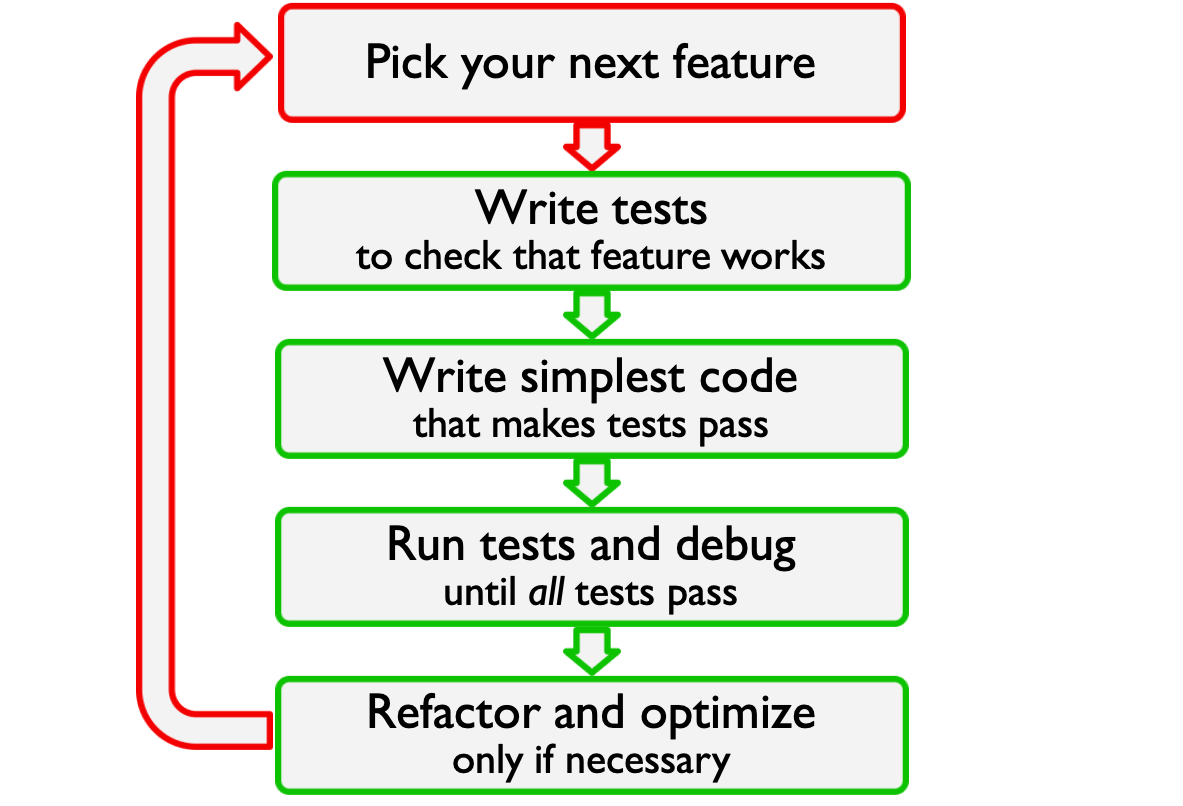Unit testing#
A unit test is a small test, which checks that a single component of your code operates in the right way. A unit test helps you to isolate what is broken in your application and fix it faster.
(Real Python: Getting Started with testing)
Testing frameworks in Python#
unittest
nosetest
pytest (We will use this one)
Basic structure of a test#
Given:#
Put your system in the right state for testing e.g. create test variables.
When:#
Execute the feature that you are testing.
Then:#
Define the expected result of the test and check that the actual outcome equals the expected result.
Example using pytest#
→ The code for testing is contained in a function whose name starts with test_xxx()
def add(a, b):
return a + b
def test_add():
# Test variables
a = 2
b = 3
expected_result = 5
# Calculate area
actual_result = add(a=a, b=b)
# Check if calculated result equals expected result
assert expected_result == actual_result
→ All test functions are stored in a file called test_xxx.py, e.g. test_geometry.py
What a good test looks like#
Good:#
Short and quick to execute
Easy to read
Exercise one thing
Fails fast
Bad:#
Relies on data files
Messes with “real-life” files, servers, databases
Question:#
What would you do if the user executes Rectangle("4", "5")?
a) Use print() to inform the user the arguments need to be numbers and return a new Rectangle object.
b) Use print() to inform the user the arguments need to be numbers and return None.
c) Raise an error.
d) Fix the arguments and return a new Rectangle object.
Test-Driven Development#

